A round-up of the most important works of art to have recently entered public collections
Akademie der Künste, Berlin
Thirteen drawings by George Grosz
In 1928, a stage production of Jaroslav Hasek’s unfinished satirical anti-war novel The Good Soldier Svejk (1921–23) – still one of the most famous and widely translated works of Czech literature – opened at the Theater am Nollendorfplatz in Berlin, with set design by the German artist George Grosz (1893–1959). The witty, technically impressive sketches Grosz made for his set designs landed him in trouble when a selection was published that same year: three of the drawings, including a depiction of Christ wearing a gas mask, were seized by the state and Grosz was put on trial for blasphemy, for which he was eventually acquitted. Nonetheless, the supreme court ordered the destruction of the Christ drawing; Grosz’s publisher managed to smuggle it away, and bequeathed it to the Akademie der Künste in the 1980s. Another of the drawings for which Grosz was censured, Bow to the Authorities, has now been acquired by the Akademie, along with 12 other works from the artist’s estate and a private collector in Italy.
Bow to the Authorities (1927), George Grosz. © Estate of George Grosz, Princeton, N.J. / VG Bild-Kunst, Bonn 2024/DACS
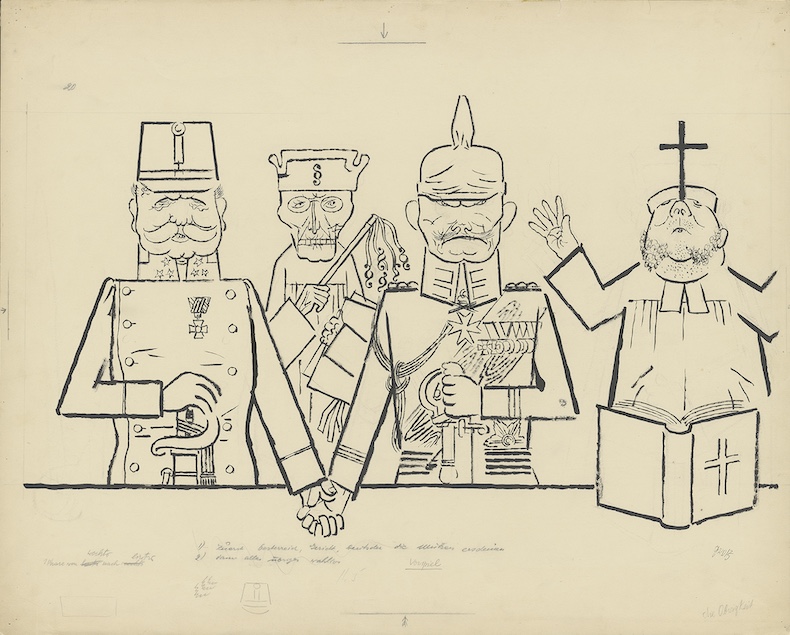
Legion of Honor, San Francisco
Portrait of Bianca degli Utili Maselli and Her Children (c. 1604–05), Lavinia Fontana
The Legion of Honor in San Francisco has acquired a remarkable work by Lavinia Fontana (1552–1614), one of the leading Bolognese mannerist painters of her day, one-time studio assistant to Giorgio Vasari and painter of the now-lost Martyrdom of St Stephen for the Basilica Papale di San Paolo fuori le Mura in Rome. The painting of the noblewoman Bianca degli Utili Maselli and six of her children (she bore 19 in total but ended up outliving all but three of them) features some cartoonishly rendered faces, a puppy, a bird and an inscription bearing the name of her daughter, Verginia. Most striking are the immaculately detailed clothing, jewellery and ornate ruffs worn by each of the seven figures. The painting has been in private collections for almost its whole life and was acquired through the support of major donors as part of the museum’s centenary celebrations. It has now gone on show in the museum’s Renaissance galleries alongside works by Titan, El Greco and others, becoming the first pre-1700 painting by a woman to join the Legion of Honor’s collection.
Portrait of Bianca degli Utili Maselli and Her Children (c. 1604–5), Lavinia Fontana. Photo: Randy Dodson; courtesy Fine Arts Museums of San Francisco
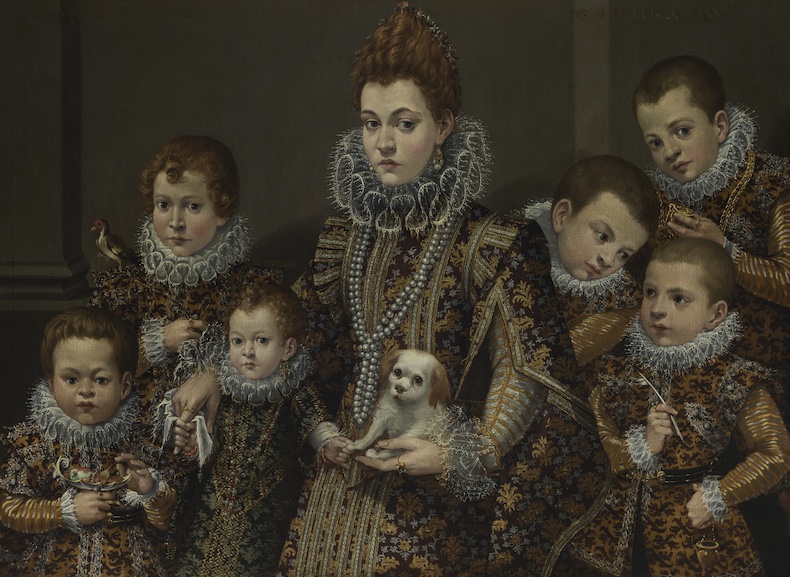
J. Paul Getty Museum, Los Angeles
Seventeen works on paper by Guercino, Degas, Wright of Derby and others
The Getty has announced the purchase of 17 works on paper from a private collection, including a rare ink drawing by Guercino, a lifelike study of a boy reading by Joseph Wright of Derby and a pastel portrait of a woman by Eva Gonzalès. The last of these, The Maid of Honour (1879), is one of the most famous works by Gonzalès, an Impressionist who is undergoing something of a critical revival. The acquisition also includes a remarkable work by Degas titled At Rest after the Bath – a charcoal and pastel depiction of a nude figure that is one of only 20 works that the artist chose to publish in his 1897 volume Vingt dessins.
Resting after the Bath (1896), Edgar Degas. Getty Museum, Los Angeles
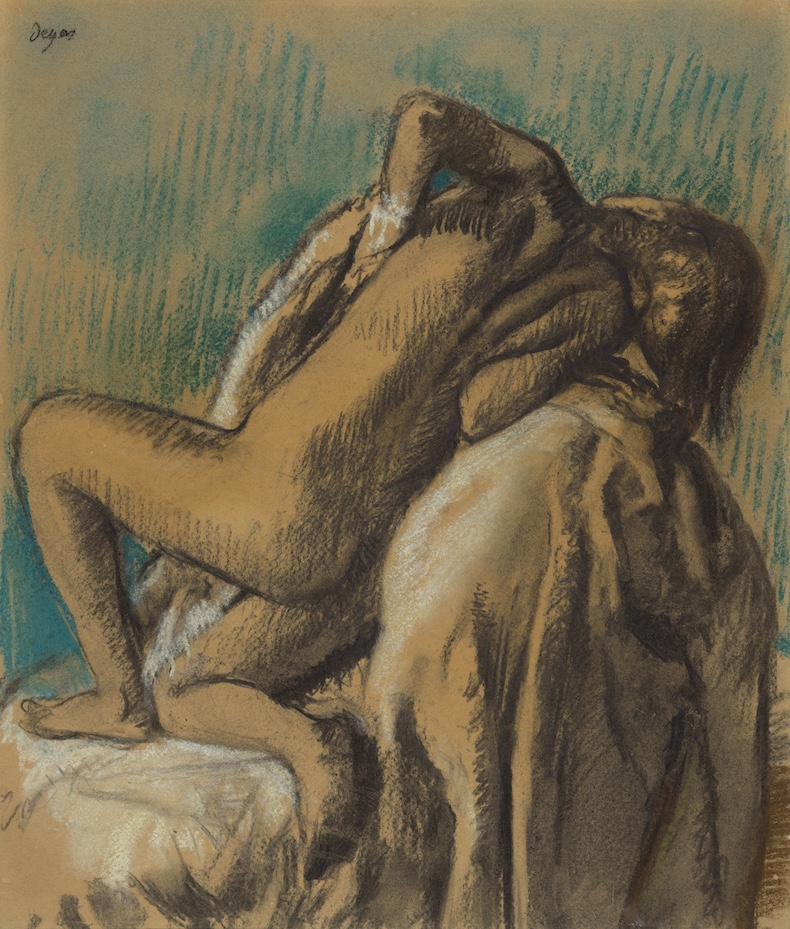
Sorolla Museum, Madrid
Copy of Velázquez’s Christ Crucified (1632) made by Joaquín Sorolla (c. 1883)
The Sorolla Museum was established in 1932 in the Madrid building that the painter Joaquín Sorolla (1863–1923) called his home and workshop for much of his life. Sorolla was a skilled and adaptable artist who produced patriotic battle scenes, impressionistic group portraits, a series of vast murals that depicted various Spanish regional traditions, and even a portrait of President William Howard Taft. At the age of 18 Sorolla paid his first visit to the Prado, after which he began making copies of Old Masters, including this impressive copy of Velázquez’s Christ Crucified (1632), which has been bought by the Sorolla Museum for €70,000 from the auction house Subastas Segre.
Copy of Christ Crucified by Diego Velázquez (1632), made by Joaquín Sorolla in 1883. Museo Sorolla, Madrid
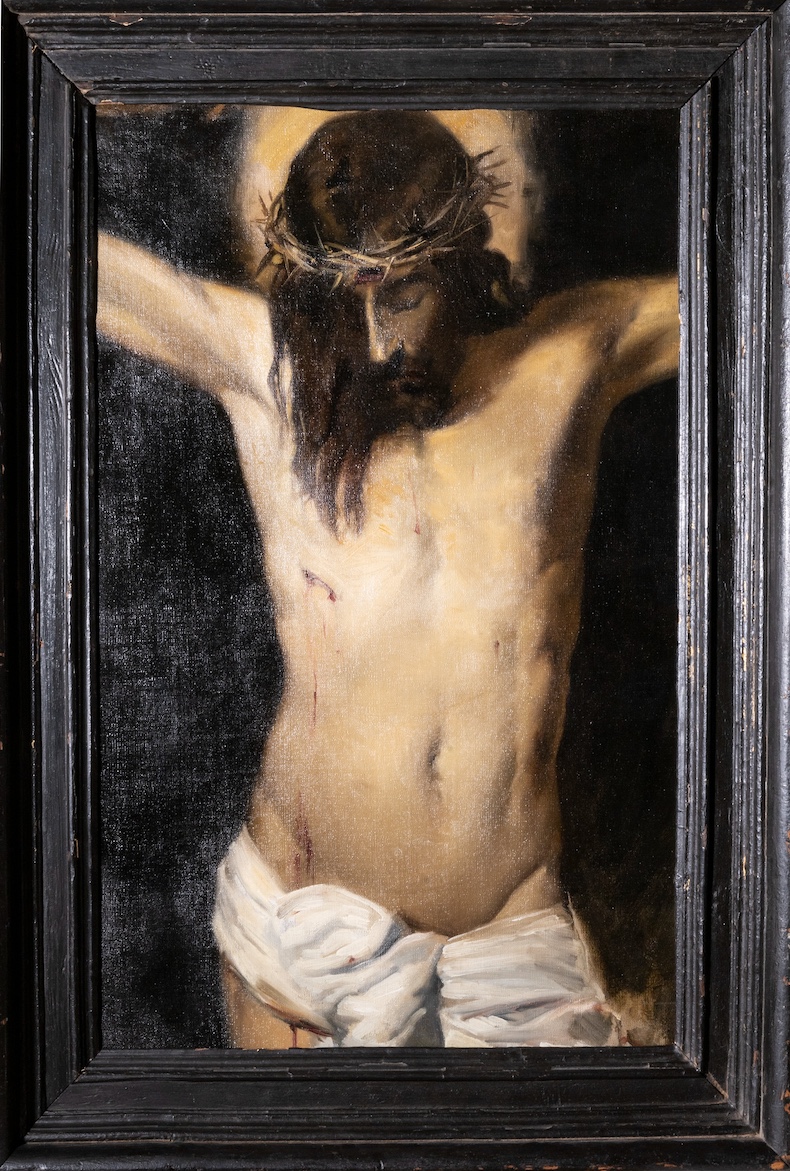
Musée du Louvre, Paris
Design for a cantorial staff of Notre-Dame in Paris (1538) by Rosso Fiorentino
The Florentine mannerist Rosso Fiorentino (1495–1540) – so called owing to his red hair – is less well known than his exact contemporary Pontormo. He was, however, responsible for several minor masterpieces, most notably an altarpiece depicting Christ’s deposition from the cross for a church in Volterra, Tuscany – a scene Pontormo also painted in more colourful, fantastical fashion at the same time. His technical skill as a draughtsman is evident from this drawing recently acquired by the Louvre, an ornate design for a cantorial sceptre to be used at Notre Dame. Done in pen and black chalk with a brown and yellow wash, the drawing also includes the faint image of a hand clutching the sceptre. The museum is already home to Rosso’s dramatic Pietà, which was painted around the same time.
Design for a cantorial sceptre drawn by Rosso Fiorentino in 1538. Musée du Louvre, Paris
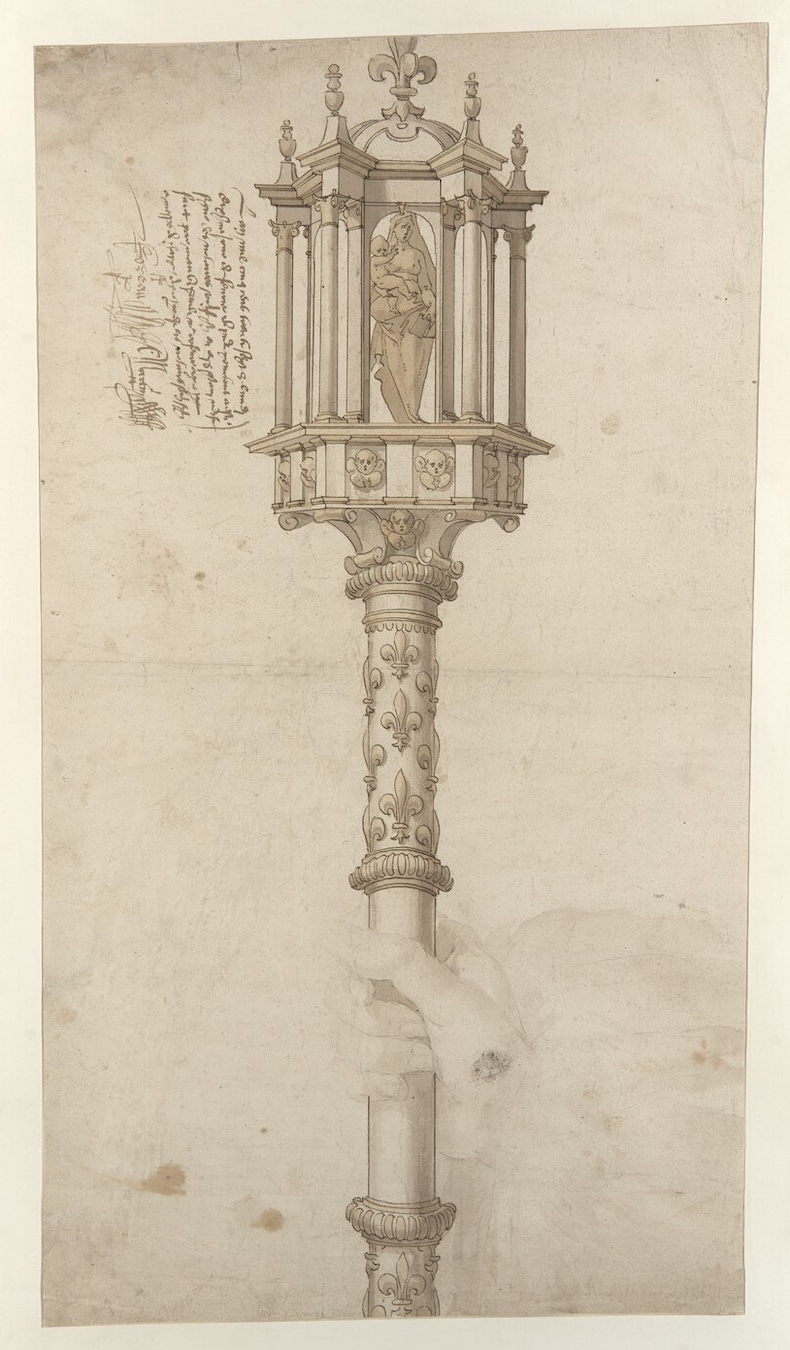
Tate Britain, London
Through the Looking-Glass (1875), Louise Jopling
Tate Britain has acquired its first painting by Louise Jopling (1843–1933), a British artist and suffragist who is little known today. Jopling was highly respected in her day, however: her work was commercially successful, she exhibited at the Royal Academy and in 1901 she became one of the first women admitted to the Royal Society of British Artists. She was friends with cultural figures including Oscar Wilde and James Whistler, who painted her portrait two years after she produced this work, titled Through the Looking-Glass – an enigmatic depiction of the artist at work, dressed in blue and balancing a palette on her arm. The painting is currently on show in the exhibition ‘Now You See Us: Women Artists in Britain 1520–1920’, which opened on 16 May and runs until October.
Through the Looking-Glass (1875), Louise Jopling. Photo: Tate/Sonal Bakrania
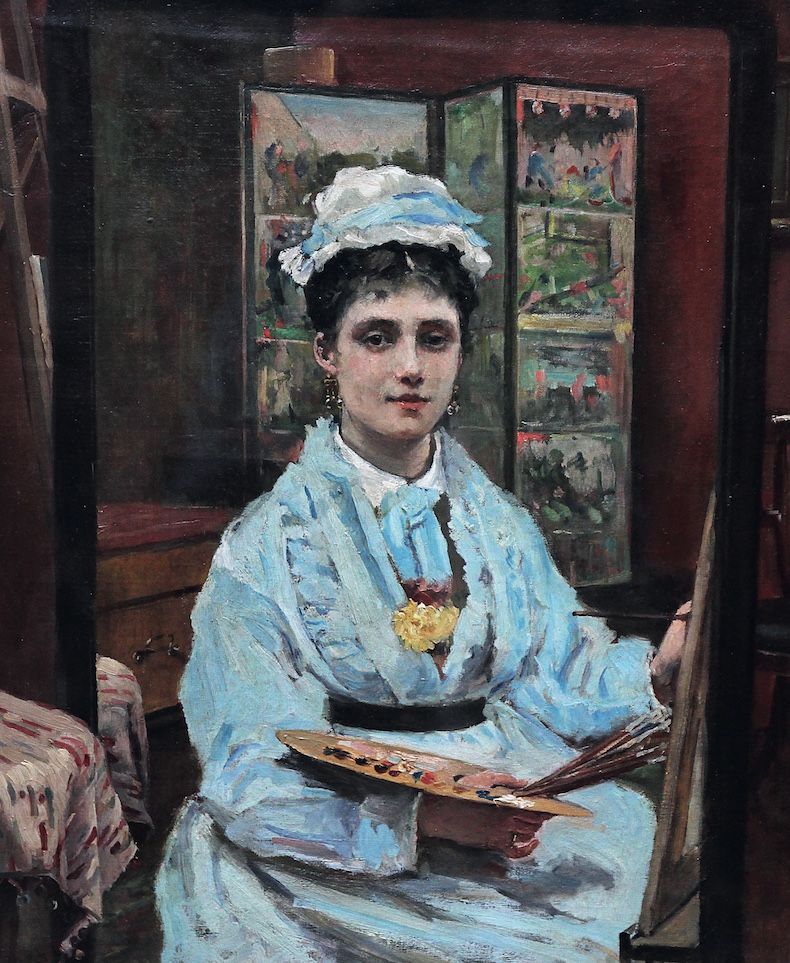
Musée Bossuet, Meaux
The Penitent Magdalene in the Desert (n.d.), Nicolas Loir
The Western art canon is full of depictions of the conversion of Mary Magdalene, including an emaciated wooden sculpture by Donatello, a wistful portrait by Caravaggio, a drowsy-looking depiction of the saint by Gentileschi and a vibrant allegorical Cagnacci canvas, to name a few. The Musée Bossuet, housed in the old episcopal palace in Meaux just outside Paris, has bought an evocative example by the less well-known painter Nicolas Loir (1624–79), showing Magdalene sitting in a cave clutching a skull, Bible and wooden cross. The painting will go on show in the museum’s already ample gallery of 17th-century French art.


